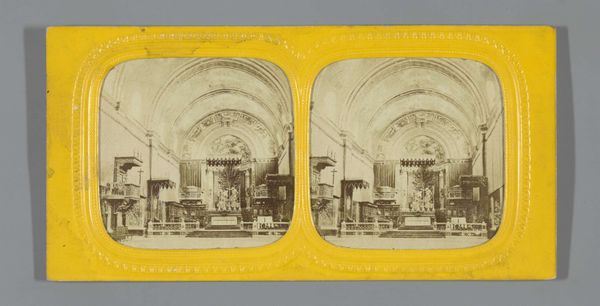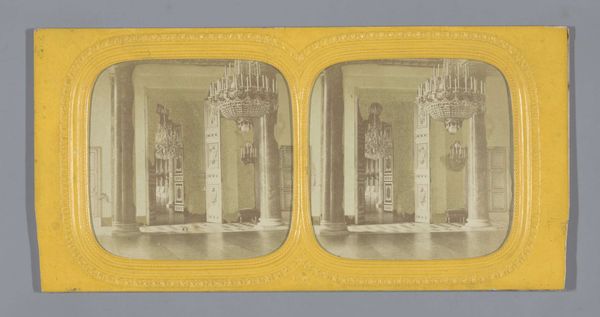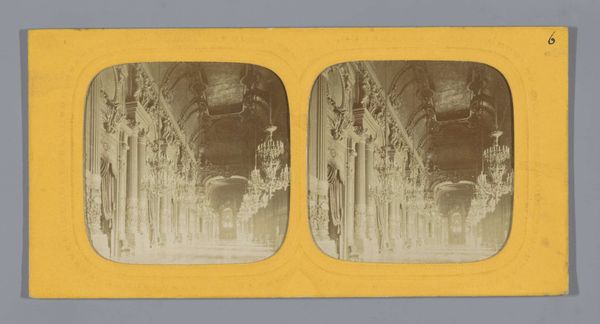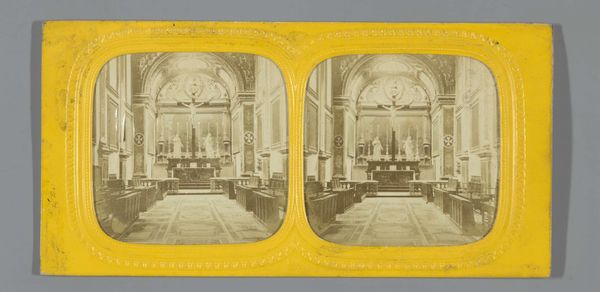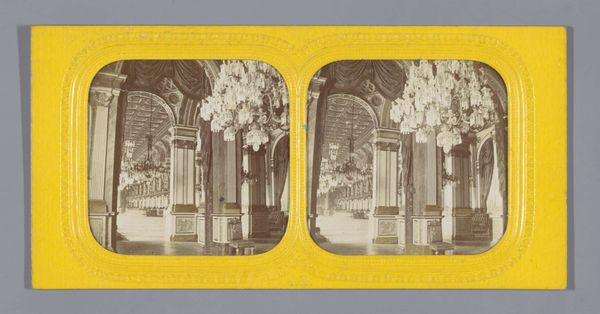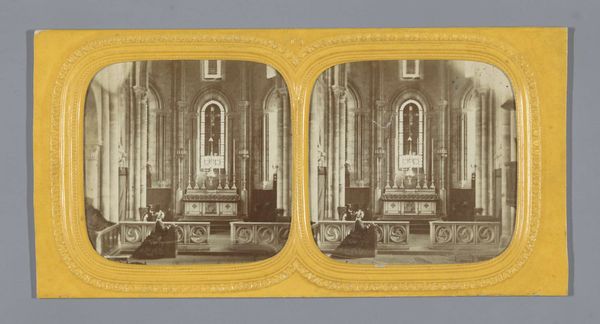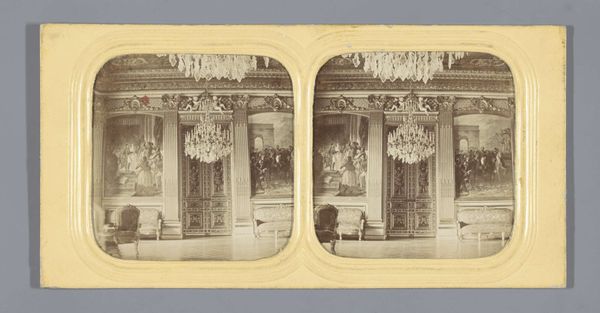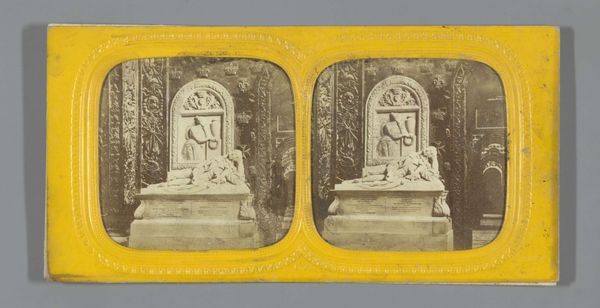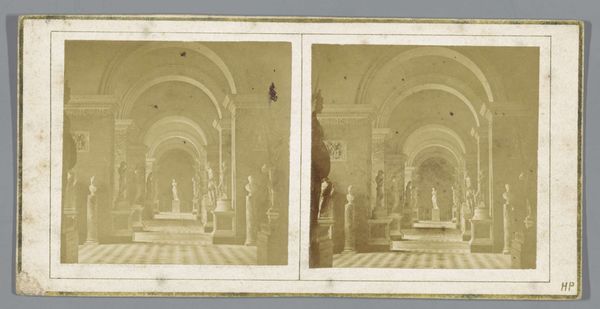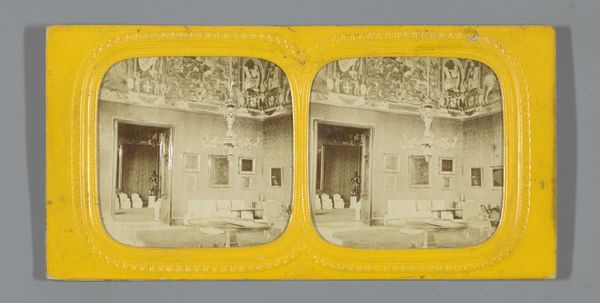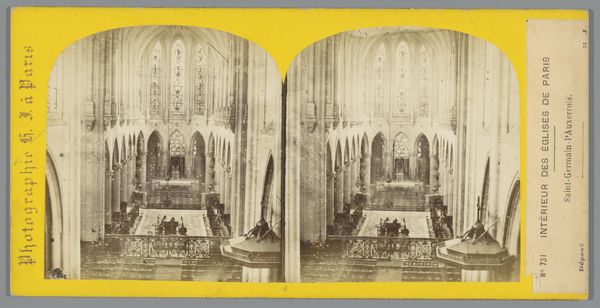
print, photography, gelatin-silver-print, architecture
# print
#
photography
#
gelatin-silver-print
#
architecture
#
realism
Dimensions: height 87 mm, width 175 mm
Copyright: Rijks Museum: Open Domain
Curator: Here we have an intriguing gelatin-silver print dating from around 1855 to 1875. It's an anonymous work entitled "Gezicht op het altaar van de Sint-Janscokathedraal in Valletta, Malta"—or, a view of the altar of Saint John's Co-Cathedral in Valletta, Malta. Editor: My initial reaction is one of overwhelming ornate detail. The baroque excess of the altar practically vibrates off this photograph. It’s so detailed, yet muted in its greyscale presentation, offering both clarity and distance. Curator: Precisely. The photograph captures the interior of the Co-Cathedral at a crucial time in its history and that of Malta itself, reflecting the cultural and religious influence exerted throughout the island, especially via prominent institutions. Think about the resources, and skilled craftsmanship required for a place like that. Editor: And it all feeds back into the power structures, doesn't it? This image, reproduced as a stereo card, allows middle-class consumers across Europe and America to experience the visual power of a place they likely couldn’t visit. They're consuming, through photography, the experience of encountering elaborate religious craftsmanship. Curator: Precisely! This wasn't merely an image; it was a commodity that allowed for the dissemination of religious ideology and Maltese cultural identity. How do you see the role of the gelatin-silver print in that? Editor: Gelatin-silver prints, a relatively new technology, offered greater detail and tonal range than earlier photographic processes. That's key here; think about how important detail is when depicting opulent interiors intended to awe and inspire devotion. Curator: A compelling observation. The choice of gelatin-silver emphasizes realism. Photography positioned itself as a tool for accurate recording but was used here to sell access to experiences. The labour and materials behind both the church itself, and the production of images for mass consumption like this, become fascinating to untangle. Editor: Ultimately, this seemingly simple stereo card speaks volumes about cultural exchange, the impact of technology on society, and how we visually consume places and cultures distant from our own. It reminds us of photography's dual role: art and document. Curator: Agreed. Reflecting on this, one begins to appreciate the multiple layers—material, cultural, political—contained within a seemingly simple stereoscopic view.
Comments
No comments
Be the first to comment and join the conversation on the ultimate creative platform.
